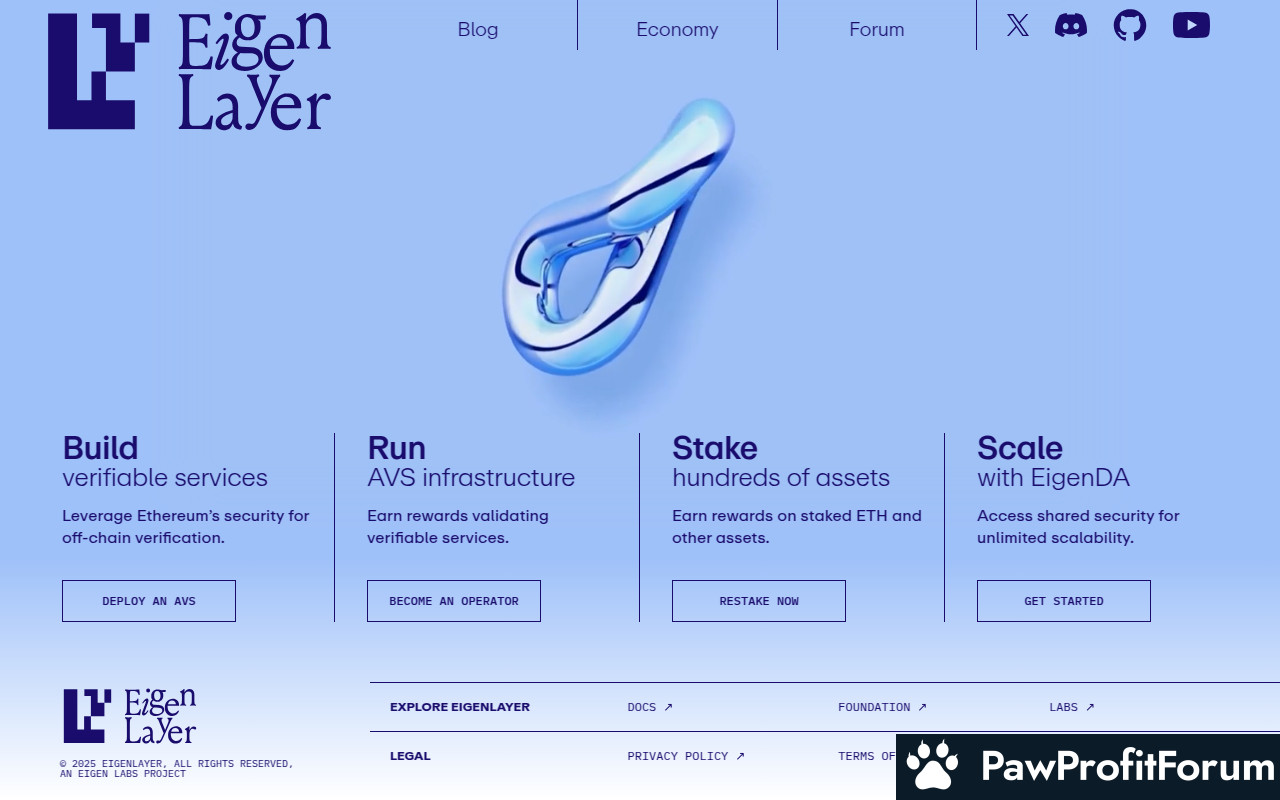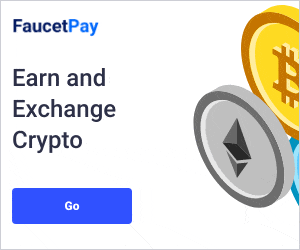What Is the EIGEN Token?
The EIGEN token is a universal intersubjective work token designed for EigenLayer, enabling security for various digital tasks that are not just objectively verifiable but also intersubjectively attributable. Unlike traditional work tokens that are tied to one specific digital task or objective faults (verifiable on-chain), EIGEN addresses a broader category of faults where multiple external observers agree on whether the task was performed correctly. This expands the range of tasks that can be securely managed on a blockchain. EIGEN tokens are used for:- Staking for intersubjective faults on the EigenLayer platform.
- Performing validation tasks across various Actively Validated Services (AVS).
- Incentivizing and penalizing operators based on their performance.
What Is the EIGEN Token?
The EIGEN token is a universal intersubjective work token designed for EigenLayer, enabling security for various digital tasks that are not just objectively verifiable but also intersubjectively attributable. Unlike traditional work tokens that are tied to one specific digital task or objective faults (verifiable on-chain), EIGEN addresses a broader category of faults where multiple external observers agree on whether the task was performed correctly. This expands the range of tasks that can be securely managed on a blockchain. EIGEN tokens are used for:- Staking for intersubjective faults on the EigenLayer platform.
- Performing validation tasks across various Actively Validated Services (AVS).
- Incentivizing and penalizing operators based on their performance.
What Are Intersubjectively Attributable Faults?
Intersubjectively attributable faults are errors or failures in digital tasks that can’t necessarily be proven with cryptographic or on-chain evidence but can be agreed upon by external observers. Examples include:- Data availability: Determining whether data is accessible across the network.
- AI inference accuracy: Evaluating AI model predictions within a certain margin of error.
- Oracle price inputs: Verifying the correctness of reported real-world data.
How Does EIGEN Token Staking Work?
EIGEN token staking involves locking up tokens as collateral for operators to perform validation and coordination tasks.The key ideas behind staking with EIGEN are:
How Many EIGEN Tokens Are in Circulation?
The EIGEN token supply details will depend on the platform's issuance policies. As of the time of its release, the tokenomics structure and total supply may be influenced by staking rewards, slashing events, and issuance for AVS security.What Makes EIGEN Unique?
EIGEN is designed to resolve faults in decentralized tasks that are agreed upon by multiple external observers. Unlike traditional tokens that focus solely on objectively verifiable tasks, EIGEN addresses faults that may not be provable on-chain but are clearly identifiable off-chain. Its universality allows it to secure various tasks across many services on the EigenLayer platform.Who Can Use the EIGEN Token?
The EIGEN token can be utilized by AVS developers, validators, and operators looking to secure services that require intersubjective agreement. It plays a complementary role to ETH restaking, where ETH can secure objectively verifiable tasks and EIGEN handles more subjective faults.What is EigenLayer?
EigenLayer is a groundbreaking protocol that leverages the Ethereum blockchain to introduce a novel concept known as restaking. This innovative approach to cryptoeconomic security allows Ethereum stakers to reuse their staked ETH or Liquid Staking Tokens (LST) across various decentralized services within the EigenLayer ecosystem. By opting into EigenLayer smart contracts, stakers can extend the security of their staked assets to support additional applications on the network, thereby earning extra rewards for their contributions.The primary motivation behind the development of EigenLayer is to address the fragmentation of security in the decentralized ecosystem. Traditionally, each new service on Ethereum has had to establish its own trust network, leading to a scattered security landscape. EigenLayer's solution enables services, regardless of their technical specifications, to access the collective security provided by Ethereum's stakers. This not only reduces the capital requirements for individual stakers but also enhances the overall trust and security for services tapping into this pooled resource.
EigenLayer's architecture is designed to facilitate a seamless interaction between stakers, operators, and services. Stakers can delegate their ETH to operators or choose to run validation services themselves, becoming operators in the process. This delegation is based on a mutual opt-in mechanism, ensuring that both parties agree to the terms of participation. Once delegated, stakers can select which Actively Validated Services (AVSs) they wish to support, contributing to the security and functionality of the network.
Operators play a crucial role in the EigenLayer ecosystem by running AVS software. These operators are responsible for performing validation tasks for AVSs, ensuring the integrity and reliability of the services offered to users. Through this collaborative effort, EigenLayer aims to foster an environment of permissionless innovation and free-market governance, where anyone can contribute to the security and development of decentralized services on Ethereum.
In summary, EigenLayer represents a significant advancement in the field of blockchain technology, offering a scalable and secure framework for enhancing the cryptoeconomic security of the Ethereum network. By enabling the restaking of ETH and LST, EigenLayer not only optimizes the utilization of staked assets but also promotes a more unified and robust security model for the decentralized ecosystem.
How is EigenLayer secured?
EigenLayer enhances the security of the Ethereum network through a novel approach called restaking. This mechanism allows for the reallocation of staked Ethereum (ETH) to support additional applications and services on the network, thereby extending the cryptoeconomic security model of Ethereum to a broader ecosystem. By enabling Ethereum stakers to restake their ETH or liquid staking tokens (LST), EigenLayer facilitates a more efficient use of capital and resources, allowing for pooled security measures across various services.The architecture of EigenLayer is designed to support a wide range of applications through Actively Validated Services (AVSs), which are integral to its ecosystem. These services benefit from the enhanced security provided by the restaked ETH, leveraging the trust and integrity of the Ethereum network. Operators play a crucial role in this ecosystem by running AVS software and enabling stakers to delegate their staked ETH to them. This delegation process is mutual, requiring agreement from both parties, and allows stakers to retain control over their assets while contributing to the security of the network.
EigenLayer's approach addresses a common challenge in the decentralized space: the need for new services to establish their own trust networks. By tapping into Ethereum's existing security framework, EigenLayer eliminates the need for services to bootstrap security from scratch, fostering an environment conducive to innovation and growth within the Ethereum ecosystem. This model not only reduces capital costs for participants but also significantly enhances the trust and security guarantees for individual services, making it a pivotal development in the advancement of blockchain technology and its applications.
How will EigenLayer be used?
EigenLayer is a transformative protocol designed to enhance the Ethereum network's security and scalability. It introduces a novel concept known as restaking, which allows Ethereum stakers to leverage their staked ETH or liquid staking tokens (LST) in new ways to secure additional protocols and services within the EigenLayer ecosystem. This process not only broadens the security framework of Ethereum but also opens avenues for stakers to earn rewards by participating in the security of other protocols.The core of EigenLayer's innovation lies in its ability to pool cryptoeconomic security across multiple services, known as Actively Validated Services (AVSs). By enabling stakers to restake their assets, EigenLayer significantly reduces the capital requirements for individual stakers to contribute to the network's security. This pooled security model also enhances the trust guarantees for services utilizing EigenLayer, making it an attractive option for developers looking to build on Ethereum.
EigenLayer's architecture is designed to be inclusive and flexible, allowing for a wide range of services to benefit from its security model. Operators play a crucial role in this ecosystem, acting as the bridge between stakers and the AVSs. They are responsible for running the AVS software and facilitating the delegation process, where stakers can opt to delegate their staked assets to these operators. This delegation is based on a double opt-in mechanism, ensuring that both parties are in agreement.
The introduction of AVSs marks a significant step forward in the evolution of decentralized services on Ethereum. These services can range from financial applications to decentralized autonomous organizations (DAOs), all benefiting from the enhanced security and scalability provided by EigenLayer. By tapping into the pooled security of Ethereum's stakers, AVSs can operate with higher trust levels and lower operational costs.
In summary, EigenLayer is set to play a pivotal role in the future of Ethereum's ecosystem. Its restaking feature not only offers stakers new opportunities to earn rewards but also strengthens the overall security and scalability of the network. As more developers and operators engage with EigenLayer, the potential for innovative services and applications on Ethereum is bound to increase, fostering a more secure, scalable, and innovative blockchain ecosystem.
Before engaging with EigenLayer or any other blockchain technology, it's crucial to conduct thorough research. The landscape of cryptocurrencies and blockchain is complex and ever-evolving, making informed decision-making paramount for anyone looking to participate.
What key events have there been for EigenLayer?
EigenLayer has marked its presence in the cryptocurrency ecosystem through a series of significant developments and contributions. Initially, its protocol was launched on Ethereum, a foundational step that set the stage for its subsequent innovations. This protocol is designed to leverage Ethereum's existing security by allowing stakers to restake their ETH, thereby extending cryptoeconomic security across additional applications. This process, known as restaking, represents a novel approach in the cryptoeconomic security domain, offering a way for stakers to earn additional rewards while bolstering the security of the network.Following its launch, EigenLayer introduced restaking as a pioneering primitive in cryptoeconomic security. This innovation allows for the reuse of staked ETH in a manner that enhances the security provisions for various applications on the Ethereum network. By enabling stakers to opt into EigenLayer smart contracts to restake their ETH or liquid staking tokens (LST), the protocol facilitates a pooled security mechanism that significantly reduces capital costs for participants and elevates trust guarantees for individual services.
Another notable development in EigenLayer's journey is the creation of EigenDA, a data availability store designed to support the ecosystem's needs for reliable and accessible data storage solutions. This component plays a crucial role in ensuring the integrity and availability of data critical for the operation of decentralized applications (dApps) and services within the EigenLayer ecosystem.
Furthermore, EigenLayer has been instrumental in enabling the creation of Actively Validated Services (AVSs) and facilitating the registration of Operators. These Operators are essential for running AVS software, contributing to the ecosystem's overall security and functionality. Through this mechanism, stakers can delegate their staked ETH to Operators or choose to run validation services themselves, becoming Operators in the process. This delegation model is based on a double opt-in system, ensuring a mutual agreement between stakers and Operators and allowing for a flexible and secure participation in the validation of AVSs.
In addition to these technical milestones, EigenLayer has actively engaged with the broader cryptocurrency community through participation in conferences and hackathons. These events have provided platforms for showcasing its innovations, fostering collaborations, and engaging with stakeholders interested in the development and application of blockchain technology.
Despite facing controversies, such as those surrounding its token, EigenLayer continues to contribute to the cryptocurrency landscape by addressing critical challenges in cryptoeconomic security and decentralized service provision. Its efforts to pool security resources and enable permissionless innovation underscore its commitment to enhancing the Ethereum ecosystem and the broader blockchain community.
As with any technological innovation, especially within the rapidly evolving domain of cryptocurrencies and blockchain technology, it is crucial for interested parties to conduct thorough research and consider the implications of participating in or utilizing such protocols.
| Website | www.eigenlayer.xyz/ |
| Website | docs.eigenlayer.xyz/ |
| Socials | twitter.com/eigenlayer |
| Socials | github.com/Layr-Labs/eigenlayer-contracts |
| Socials | discord.com/invite/eigenlayer |
| Contracts | 0xec53...061F83 |
| Explorers | etherscan.io/address/0xec53bf9167f50cdeb3ae105f56099aaab9061f83 |
| Wallets | www.binance.com/en/web3wallet |
| Wallets | www.trustwallet.com/ |










